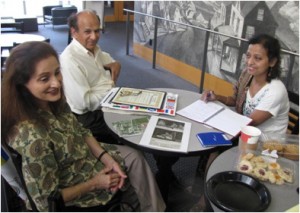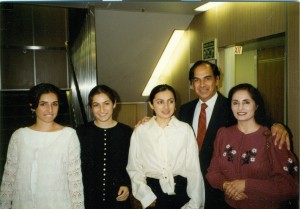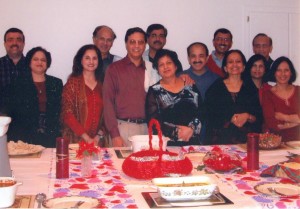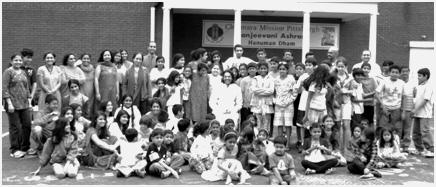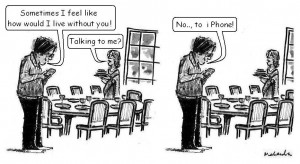Archive for category Past issues
Interfaith Marriages is Part of Our Life Here — Let Us Accept it!
Posted by admin in January 2012 on December 23, 2011
By Dilip Amin, San Francisco, California
e-mail: dilipamin@yahoo.com      www.InterfaithShaadi.org
Dilip Amin is a scientist, former president of Plymouth Balvihar in Pennsylvania and a parent of two young adult children. He is passionate about educating people about interfaith marriages, has written fifteen articles, and co-authored a book.
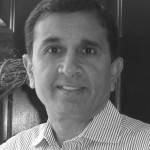 In the Western world, young adults date someone from other faiths during their college years. Therefore it should come as no surprise that in North America about a third of our young generation of Hindus (Jains and Sikhs as well) marry Christians, Jews and Muslims (Abrahamics). This trend is expected to rise in the years ahead.
In the Western world, young adults date someone from other faiths during their college years. Therefore it should come as no surprise that in North America about a third of our young generation of Hindus (Jains and Sikhs as well) marry Christians, Jews and Muslims (Abrahamics). This trend is expected to rise in the years ahead.
There is often a large gap between the expectations of Hindu parents and their children about the child’s choice of a life-mate, at least initially. Thus, where an Abrahamic life partner is selected, frequently, Hindu young adults decide without pre-emptive advice, guidance, or consultation with their parents.
It is safe to say that most Hindus are not sufficiently knowledgeable about the Abrahamic faiths and how they differ from the Hindu dharma. So, often they are not well equipped to guide their young adults in this critical transition, resulting in irrational arguments in homes.
In the predominantly first generation immigrant Hindu community, some parents whose child has not married yet, may smugly look at others whose child has a non-Hindu spouse without realizing that it could happen in their own home a few years down the road.
Interfaith marriages, we need to recognize, are a matter of chance, and do not necessarily reflect the Hindu religious training given in childhood. On the other side, parents with interfaith marriages in their homes are reluctant to share their experience of interacting with Abrahamic in-laws, resulting in loss of knowledge for the benefit of our community.
One of the critical questions that has to be addressed in any interfaith relationship is: What will be the religion of the children by this marriage? A Hindu must ask: Is there any expectation of religious “label†to be placed on the child(ren) by Baptism (Christian), Bris (Jewish) or Sunat (Islamic)?
Some other issues to address are: a) expectation of religious conversion of the Hindu groom/bride before marriage; b) first names of children; c) son’s circumcision for religious reason even though there is no medical consensus for recommending the procedure; and d) any reservation by the Abrahamic spouse to be a part of Hindu worship practice of pooja and the display of Hindu Ishwara icons in home. And finally, also on funeral rites of the non-Abrahamic spouse and children by this marriage.
Baptism, Bris or Sunat as a ritual is not an issue, but the thought process behind asking for it should be a concern. The Bible states more than thirty times that Lord their God is a Jealous and Angry God and will not tolerate praying to “other gods.†Are Lord Krishna and Goddess Laxmi other gods? Further, Christianity teaches that only their faithfuls will achieve salvation, and others will be condemned to hell on the Judgment Day, after the Second Coming of Christ in the future. Islam too has similar teachings. Does it mean Mahatma Gandhi will go to hell?
Not all Abrahamics impose their religious beliefs/practices on their non-Abrahamic spouses, but it is critical to find out facts sooner than later.
It is also important to recognize that despite all the potential marital pitfalls, a successful and fulfilling inter-religious marriage is possible. One effective way to achieve this is by not imposing one’s religious beliefs on the other partner.
America on Sale
Posted by admin in January 2012 on December 23, 2011
By Ashok Madhav, Penn Hills, PAÂ
 Americans are a generous bunch – I mean the American business especially. Take a walk in any mall. You see Sale signs practically on every store window — be it a store for garments, computers, furniture, jewelry, shoes, toys… The common signs are “20-50% Off Sale Price†or “50% off of Already Marked Down Prices.†Another is “Buy one and get the other one free or half off.†America on Sale
Americans are a generous bunch – I mean the American business especially. Take a walk in any mall. You see Sale signs practically on every store window — be it a store for garments, computers, furniture, jewelry, shoes, toys… The common signs are “20-50% Off Sale Price†or “50% off of Already Marked Down Prices.†Another is “Buy one and get the other one free or half off.†America on Sale
Sometimes we come across signs like this: “All items 70% off for limited time only.†Occasionally, this sign: “This is One Day Sale Onlyâ€, which I’ve seen hanging on the window for several days in a row.
Sales for special days like President Day, Easter, Memorial Day, Christmas, just to name a few, are always attractive. One does get good bargains on clothes, toys, chocolates and other goodies.
If a business is giving anything for 70% off the sale price, think of the mark up on those items. Much of the items are imported from the wretched Third World from places like Nicaragua, Honduras, Mexico, Sri Lanka, Bangla Desh… … at a fraction of the price sold in the American outlets. China, the biggest producer of all kinds of consumer goods, supplies 70% of the merchandise to Walmart, world’s largest retail store.
We, including our politicians, buy these products and support outsourcing of jobs from the USA. Often, even the “Buy American†signs and are made in Red China. But the issue of outsourcing is nice topic for politicians to talk about and get the votes for themselves.
The bottom line for all of us is to save as much as possible and get the maximum benefit. This reminds me of a cartoon, where wife tells her husband, “Honey, today I saved quite a bit of money by buying my dress, a hand bag and a pair of shoes. I wanted to save more but I ran out of money†!!!                       n
Ha, Ha, Ha!!!
Posted by admin in January 2012 on December 23, 2011
(Newt) Gingrichian Ideas/Thoughts in His Own Words
  “[We need] a massive new program to build a permanent lunar colony to exploit the Moon’s resources.â€
 “[We need] a massive new program to build a permanent lunar colony to exploit the Moon’s resources.â€
“[A] mirror system in space could provide the light equivalent of many full moons so that there would be no need for nighttime lighting of the highways.â€
“We should replace bilingual education with immersion in English so people learn the common language of the country…†Two years later, Gingrich unveils a new Spanish-language website, The Americano
“It doesn’t matter what I do. People need to hear what I have to say. There’s no one else who can say what I can say.â€
“Gingrich’s Primary mission — Advocate of civilization, Definer of civilization, Teacher of the rules of civilization, Leader of the civilizing forces.â€Â – Newt on himnself.
“I have enormous personal ambition. I want to shift the entire planet. And I’m doing it. I am now a famous person. I represent real power.â€
“I’m not a natural leader. I’m too intellectual; I’m too abstract; I think too much.â€
“The idea that a congressman would be tainted by accepting money from private industry or private sources is essentially a socialist argument.â€
“You can’t trust anybody with power.â€
================================
Jon S. Corzine is the former CEO of Goldman Sachs, New Jersey’s one-term former Democratic U.S. senator and its Democratic ex-governor. His earnings in Goldman Sachs was in several hundreds of millions of dollars.  When Corzine was the CEO of the commodities brokerage firm MF Global, it precipitously collapsed and became bankrupt in October 2011.  Over $1 billion of  MF Global’s account holders’ monies were missing, for which US Congress held hearings.
In testimony to a Congressional committee in December Corzine said he was “stunned†to learn shortly before MF Global became bankrupt last October that MF Global could not account for the money, estimated to be $1.2 billion.
He said,“I simply do not know where the money is,†all the $1,200,000,000 of it.
Is there any wonder why people hold politicians and Wall Streeters in such contempt?Â
================================
We do not enjoy pleasures — we are only consumed by them.
We do not observe austerity — it brands us instead.
Time does not pass — only we are passing.
Cravings do not wear away — only we are worn out.
 — Bhartrhari, the famous Sanskrit poet  (7th century or 5th century AD)
Phipps Conservatory to Unveil Plans for Tropical Forest India in October Gala
Posted by admin in October 2011 on September 29, 2011
Phipps Conservatory and Botanical Gardens is pleased to announce the Wines Under Glass: Passage to India event, to be held on Friday, October 21 at 6:30 PM in the Conservatory. Guests at this special occasion will join Event Co-Chairs Sunil & Nita Wadhwani and Anuj Dhanda & Anne Nemer to revel in the garden as exciting plans are unveiled for next year’s Tropical Forest India exhibit and sustainability stars are chosen for the annual Green Heart of Pittsburgh award. So, mark your calendar.
This event represents the first-ever celebration of the upcoming February 2012 opening of Phipps’ Tropical Forest India, which promises to be the finest exhibit on the flora, cultures and people of India.
Attendees will enjoy superb Indian performers, a bounty of choice Indian delicacies, buzzing friends and entertainers, fine wines, signature cocktails, and tantalizing auction treasures.
The unforgettable evening begins with a VIP Reception at 6:30 pm in the Tropical Forest Conservatory and its Special Events Center, featuring a special selection of food and wine; a 7:30 pm Green Heart Reception follows with a live auction, the Green Heart Awards and more. Tickets are available for purchase now at
http://phipps.conservatory.org/exhibits-and-events/featured-event.aspx?eventid=557 or by contacting Joe Reed by phone at 412-441-4442, ext. 3966. For other questions contact Greg DuFour, Director, Development Campaign at ext. 3701, or by e-mailing to gdufour@phipps.conservatory.org
Phipps was founded in 1893 as the nation’s first teaching conservatory and the largest and finest glasshouse exhibitory of its time. Esteemed today as an eco-champion among North America’s 500 public gardens and arboreta, it is a leading horticultural showcase and educator. For its efforts, Phipps has been the subject of national and international attention:
-
 In September 2009, Phipps had the honor of hosting the G-20 world leaders for their summit’s three opening events;
-
in May 2010, USA Today recognized Phipps as one of America’s top 10 public gardens;
-
in June, PBS stations nationwide aired Growing a Greener World, a program which recognized Phipps as “America’s greenest public garden;†and
-
in November, Phipps Executive Director Richard Piacentini received the prized 2010 U.S. Green Building Council’s Individual Leadership Award, recognizing green building leaders and visionaries, in its first-ever award to an individual in the NGO category.Â
Juginder and Dolly Luthra: Reviving Weirton’s Festival of Nations
Posted by admin in October 2011 on September 29, 2011
Reviving Weirton’s Festival of Nations
By Nandini Mandal      e-mail:  nandini@nandanik.com
Note: Nandini Mandal, the artistic director of Nandanik Dance Academy, recently spoke to Juginder and Dolly Luthra of Weirton, WV, on their participation in reviving Weirton’s Festival of Nations, last held in 1944. She met the Luthras at CMU.
Their story started as a Bollywood-style romance. From the forced migration during India’s painful Partition in 1947, to fifty years later, reviving a defunct Festival of Nations in Weirton, WV, through organizing an Indian Cultural Day there. And their story still continues.
He was born in Multan, in Pakistan now. His family, like other millions, was uprooted during the 1947 Partition and settled down in Panipat, in today’s Haryana, India. Seventh child in the family, he joined the medical school in Amritsar in 1961, obeying his father’s decision.
Three years later, a lovely young lady joined the same medical school in dentistry. Originally from Bombay, she moved to Chandigarh as her father was part of Le Corbusier’s architectural team that built Chandigarh. At the college social, they were part of the play together, with the lovely woman getting the best actress prize. He, Juginder, was in his third year, and she, Dolly, was in her first. And the rest was their destiny together.
Juginder and Dolly were married in 1968, and they moved to the U.K. in 1974 with their first daughter Namita. Juginder Luthra, an ophthalmologist, got his advance diploma in UK. Soon after, their twin baby girls, Rohini and Rashmi, arrived. The Luthras eventually wanted to reach the US shores.
With America still recovering from the Vietnam War, there was a dearth of qualified and experienced doctors in many cities, including Weirton, WV. One of his friends already in Weirton asked him to come to Weirton to practice medicine. In 1975, the Luthras arrived at Weirton with their three daughters.
While Dolly stayed home for eight years to raise their daughters before starting her dentistry practice, Juginder worked as a house physician at the Weirton Medical Center. Weirton was now their home away from home. Juginder recalls, “Our neighbors embraced us, giving us car rides, taught us driving in our very early days as immigrants.â€
To find out how this Punjab da puttar (son of Punjab) became intertwined with the heart and soul of Weirton decades later, we need to understand Weirton’s history built around steel. The economy of Weirton (population 30,000 at its peak) was driven by the steel mill with 13,000 employees at its peak.
In 1909, Ernest T. Weir established a Tin Plate Mill near Holliday’s Cove, a farming village, calling it Weirton, an unincorporated company town. With the expanding mill and an influx of European immigrants, Weirton was incorporated in 1947 by merging several neighboring communities around the mill.
As is the case with all steel towns in the US, Russian, Polish, Greek, Slavic, Italian, Finnish, Hungarian, Welsh, Dutch, Spanish immigrants, and native African-Americans flocked to Weirton in the early 20th century. The interactions among the disparate immigrant groups were not always smooth. A large number of immigrants living in close proximity in a small, isolated town without a strong common American identity was a cause for concern for leaders of the community.
So, in 1934 Weirton’s civic and business leaders conceived a Festival of Nations to foster a sense of fellowship and social and cultural interactions among the ethnic groups. They wanted to showcase the diverse culture in a noncompetitive atmosphere. They succeeded in their mission, and until 1939, the Festival of Nations continued in this spirit with ten nationality groups’ participation in the thousands.
Then World War II started in 1939, ending in 1945. The returning victorious soldiers and the people at large were forged with a common American identity. With this, the rationale for the Festival of Nations too ended, the last one was in 1944.
Good times roared for decades. But with steel’s decline in the 70s, Weirton was devastated like other US towns built around steel. Today Weirton’s population is only 19,000, with only 1000 in steel! Weirton is a now a bedroom community to people working in Robinson Township and the Airport areas.
Flash forward to 2006. The Luthras, now well-established in Weirton, and both ardent art lovers and patrons, decided to showcase India’s dance and musical extravaganza to the people of Weirton. They dipped into the Indian talent in Pittsburgh with artistes trained in India’s rich musical and dance traditions. Sponsored by the Weirton Area Museum and Cultural Center, the Luthras organized the event with Nandanik Dance Academy, Nidrita and Asish Sinha, and Sushanta Banerjee performing in an hour-long program. It was a hit with the audience.
Impressed by the event, Weirton Mayor William Miller, surprised the Luthras by declaring November 18, 2006 “India Heritage Day†in Weirton. The Luthras, now members of the Board of Directors for the Weirton Area Museum and Cultural Center, added a new dimension to Weirton’s cultural landscape.
Then came the Weirton’s centennial in 2009. In a meeting participated by Weirton’s civic and business leaders and community organizers, old-timers wanted to revive the Festival of Nations. Juginder says, “Many of us, including those who have lived here for a long time, had never heard of it before. When they heard about the festival from old-timers, everyone asked me, ‘Why don’t we create something like you did on India?’â€
Weirton’s glorious legacy, now seen through faded photographs and recalled by elders helped in its revival in 2009. The Luthras were active –- for three years, they were the chair and co-chair of the organizing committee — trying to reconnect to Weirton’s past with help from countless citizens of Weirton.
The Festival of Nations was re-started in 2009 with a parade, all singing We are the World at the Municipal Building, with artistes from Weirton and its extended neighborhood including Pittsburgh participating
Every year, attendance improved, starting from mere 400 to over 1600 people this year with twenty-one ethnic groups participating. Indians, Chinese, Koreans, and Japanese are the new entrants. People come back to participate in the parade, buy artifacts from display tables, and taste the featured multiethnic food. The Luthras made sure the gala started with an invocatory piece by Dell Fryer, or Chief White Panther, a Delaware Native American chief.
Now having acquired a building for the museum with a grant of $30,000 from the J.C. Williams foundation, the Luthras and their fellow townsmen are pleased that they were able to revive the Festival of Nations. While recognizing that the festival had seen better days in the past, they hope that it will grow in the years ahead.
Dolly Luthra says, “When my father, a PWD (Public Works Department) engineer, was part of the team that built Chandigarh in India, little did I know that decades later, I will be involved in trying to rebuild another city not physically, but culturally, far away from India. That is very satisfying to me.â€
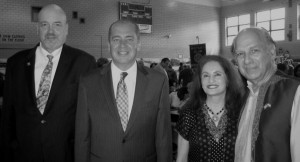
L ro R: Dennis Jones, President, Weirton Area Museum and Cultural Center; Gov. Earl Ray Tomblin of West Virginia; and Dolly and Juginder Luthra.
The Luthras are also path breakers in other ways. They are the founding members of Triveni, a cultural organization with Bangladeshi, Indian, Pakistani members to share the common ethos of the Indian subcontinent. Under the Triveni banner, in 2010 the Luthras were instrumental in showcasing the creativity of visual artists among Indians in the Pittsburgh Metro area under one roof in Monroeville to display their works.
Soft-spoken and warm, the Luthra’s dedication to Weirton that has seen better days is admirable. The Luthras went forward with the limited resources they had.
Along the way, in their efforts to rebuild the Weirton’s glorious legacy, they have befriended a diverse cross section of people in the community. Weiron too, has embraced them even tighter than before.
I need your votes to serve you better.
Posted by admin in October 2011 on September 29, 2011
By D. Raja
Editor’s note: Raja is the Republican candidate in the November election for the Chief Executive for Allegheny county. He faces Rich Fitzgerald, Democrat.
 I am really excited to be running for Allegheny County Executive. As many of you are aware, this is the third highest position in Pennsylvania behind the Governor and Mayor of Philadelphia.
I am really excited to be running for Allegheny County Executive. As many of you are aware, this is the third highest position in Pennsylvania behind the Governor and Mayor of Philadelphia.
Let me provide the “executive summary†version as to why I am running. I came to Pittsburgh about 25 years to go to school and Allegheny County has given me the opportunity to be successful. I don’t see this opportunity being available to our kids and grandkids now. I have the private sector experience as CEO creating jobs and public sector experience as Mt. Lebanon Commissioner addressing budget shortfalls and even cutting taxes. Allegheny County has unbelievable potential; however, we are in a slow decline due to “business as usual†politics. With my private and public sector experience, I know what need to be done to achieve our full potential in Allegheny County and want to bring us back to being a region for opportunity and economic prosperity.
I am including a question that many voters in Allegheny County have along with my response.
Q. Can a guy born in India ever expect to win in Allegheny County?
A. Let me share the response that key democratic elected official’s mother came up with: “If you can trust your life to an Indian Doctor, you most certainly can trust Allegheny County to an Indian CEO.â€
Like many of the readers, I came to Pittsburgh twenty-five years ago to complete my education and for my chance at the American dream. I got my Masters in Computer Science from Pitt and an MBA from Carnegie Mellon University. Shortly after I came to Pittsburgh, I joined Lockeed and spent about six years with this company. Lockheed moved its top management from Pittsburgh to the Silicon Valley. I went to the Silicon Valley and after spending time there realized that Allegheny County was home for me.
Let me share some of the opportunities that Allegheny County has provided to me. I co-founded a business in the spare bedroom of my South Hills apartment about 18 years ago. Today, I am proud to say that we are still headquartered in western Pennsylvania and employ hundreds of men and women designing and building software for businesses all around the country. In 2007, I ran a heavily contested race for Commissioner in
Mt. Lebanon. I ran with a simple approach of a vision for Mt. Lebanon with specific actions to meet the vision and I won by a large margin. Mt. Lebanon has faced severe shortfalls each year since I have been on the Commission. I not only found ways address the shortfalls but also pass along two tax cuts during the past three years.
I met my wife, Neeta, an internist, in Pittsburgh and we live in Mt. Lebanon with our two daughters Isana (9) and Omisa (7).
As the numbers of Indians in the greater Pittsburgh area have grown, we have become an essential part of the community, contributing in many areas such as medicine, engineering, and business. We, as Indians, have a long tradition of not being afraid of challenges and adversity; this has helped us to succeed in any area we choose to enter.
Now we have an opportunity to also make an impact in another arena in our region now : politics. We, as a people also have a generosity of spirit, and in helping others in any way we can. This is another way in which we can make a difference and contribute back to the community that provided us the opportunity to be successful. I am doing my best to bring as much positive exposure to the Indian American community in my campaign. Our community should look forward to an Indian American being able to achieve the Presidency of this great nation sometime soon.
I am committed to winning this race and have been working very hard on the campaign since winning the primary. Given the voter registration disadvantage, I need your help to win. Please join my team and help get the vote out, arrange fundraising events, get your friends/colleagues to attend the townhalls, put up our 4×8 signs or participate in any other way. Details the townhalls etc are available at www.joinraja.com.
I welcome your feedback. Please do not hesitate to contact me at 412-567-8448 or raja@joinraja.com. Thanks.
Celebrating India, Now a Pittsburgh Tradition
Posted by admin in October 2011 on September 29, 2011
By Shobhitha Ravi   e-mail: shobhitha.ravi@verizon.net
Editor: Shobhitha, raised in the Pittsburgh area, is pursuing her master’s degree in teaching at Pitt. She is passionate about India’s classical and folk dances and now teaches classical dance in the Pittsburgh. Shobitha’s I-Day pictures are used in this story.
Celebrating India’s Independence has become an annual event here in Pittsburgh. This gala – we can also call it a mela — always takes place on the Sunday nearest to August 15th, the official India Independence Day, at Pitt’s Cathedral of Learning in Oakland. In recent years, weather permitting, the program starts with a parade around the Cathedral with singers and dancers scattered throughout the parade.Â
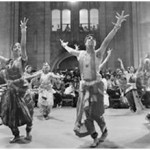 The possibility of rain this year did not prevent the parade from taking place. It was kept indoor and rerouted from the Cathedral Commons up to the Indian Nationality room with people waving hand-held Indian flags with pride.Â
The possibility of rain this year did not prevent the parade from taking place. It was kept indoor and rerouted from the Cathedral Commons up to the Indian Nationality room with people waving hand-held Indian flags with pride.Â
This event drew in, as it always does, a wide cross section of people of Indian origin with young children, high-school and college students, parents, and grandparents illing the room. Several people from the American mainstream too were there in the gala.Â
The program opened with the singing of both the US and Indian national anthems followed by public speeches, flag hoisting, and dance and musical items. A wide range of performances were staged from classical dances to Bollywood items to the energetic Bhangra, and popular and India-themed songs; and the crowd appreciated each one.Â
The attendees took turns crowding around the stage to get a glimpse of each program allowing for an engaging and dynamic environment.Â
The organizers have finally succeeded in developing a format that emphasizes India’s rich and classical folk tradition keeping the Bollywood items to a few numbers.
With the several performances and speeches, this event has become one that all Indians truly look forward to every year as a time to come together and celebrate.Â
In addition to the programs, people come to enjoy the food and other activities offered as well. The lobby was lined with food stalls and tables for charity organizations, mehndi artists, ready-made garments, and saris, which together made the cultural ambience of the Independence Day celebration.Â
The Cathedral became a lively mini-India. For many, it is a time to reunite with familiar faces and for those new, it is a time to meet future friends. It is a tradition that will continue in Pittsburgh for many, many years to come.
This year, Anju Chopra and Sumedha Nagpal emceed the program, and Dean Ramayya Krishnan from CMU was the keynote speaker. The Indian Nationality Room Committee — Saroj Bahl, Rashmi Ravindra, Ranjani Shankar, G.G. Hegde, Shernaz Cama, Nita Wadhwani and S. Ramgopal – is at the forefront of this annual event.
Ayurveda — The Science of Life
Posted by admin in October 2011 on September 29, 2011
By Daniel Casciato
Western PA Hospital News & Pittsburgh Better Times
Phone: 412.607.9808Â Â Â Â e-mail: writer@danielcasciato.com
Ayurveda is one of the fastest growing complimentary healing systems in the United States and offers a unique preventive approach for restoration of health.
 This 5,000-year-old natural healing science is experiencing a major resurgence not only in its native land of India, but throughout the world. Thanks to Dr. Lina Thakar, an Ayurvedic physician from India with over 15 years of experience, Ayurveda has now come to Western Pennsylvania. Ayurveda Wellness Center & Holistic Spa is the first and only authentic Ayurveda center in Pittsburgh and the Tri-state area offering traditional Ayurvedic treatments.
This 5,000-year-old natural healing science is experiencing a major resurgence not only in its native land of India, but throughout the world. Thanks to Dr. Lina Thakar, an Ayurvedic physician from India with over 15 years of experience, Ayurveda has now come to Western Pennsylvania. Ayurveda Wellness Center & Holistic Spa is the first and only authentic Ayurveda center in Pittsburgh and the Tri-state area offering traditional Ayurvedic treatments.
Ayurveda applies various natural methods to complement the treatment of specific illnesses so that the recovery is fast and prevents recurrence. Through Ayurveda, Dr. Lina says, you can reconnect and uncover genuine wellness and ultimate rejuvenation.
“We know that health is not a transitory feel good that takes place on an occasional spa visit. It is about feeling right and looking good, always,†says Dr. Lina, who is also affiliated with Allegheny General Hospital’s Integrated Medicine Program that offers an integrated approach to conventional and natural healing practices.
Since managing stress is a lifelong process, their spa services are aimed at longer lasting benefits. Dr. Lina and her staff try to remove the root causes of stress and not just the symptoms.
“We’ll give you the power and the tools to feel right, light, and beautiful inside,†she adds. “Whether you’re seeking a wellness consultation, spa therapy, nutrition and cooking session, natural beauty treatment, or a detoxification program, we’ll help you restore balance and reawaken your body’s natural healing mechanisms.â€
To support your Ayurvedic lifestyle, Ayurveda Wellness Center & Holistic Spa also features a retail shop which carries an array of Ayurvedic herbal oils, dietary supplements, natural beauty and skin care products, as well as Dr. Lina’s own product line.
To learn more, visit www.ayupgh.com or like them on Facebook at www.facebook.com/AyurvedainPittsburgh.
Ayurveda Wellness Center & Holistic Spa 5168 Campbells Run Rd., Suite 204. Pittsburgh, PA 15205 Hours: Mon to Sun, 9am-5pm. Evening hours by appointment. Phone: 412.809.0999 Email: info@ayupgh.com Â
Obituary: Dr. K.N. Rao, July 1937 – July 2011, Toxicologist
Posted by admin in October 2011 on September 29, 2011
 By Nagasankar Rao Dittakavi, MacDonald, PA
 Editor’s Note: Naga Sankar Rao Dittakavi, a long-time resident in the area, is an Associate Director of the Center for Legal Information at Duquesne University, Pittsburgh.
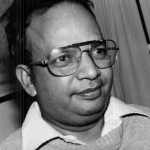 Dr. Kalipatnapu Narasimha Rao, simply known as Dr. K.N.Rao to his friends and colleagues, died on Monday, July 4, 2011 after a prolonged illness. Born in 1937 in Andhra Pradesh, India, K.N.Rao earned his bachelor’s degree in chemistry from Bombay University, and master’s in organic chemistry from Nagpur University. He completed his PhD in biochemistry at the prestigious Indian Agricultural Research Institute, New Delhi.
Dr. Kalipatnapu Narasimha Rao, simply known as Dr. K.N.Rao to his friends and colleagues, died on Monday, July 4, 2011 after a prolonged illness. Born in 1937 in Andhra Pradesh, India, K.N.Rao earned his bachelor’s degree in chemistry from Bombay University, and master’s in organic chemistry from Nagpur University. He completed his PhD in biochemistry at the prestigious Indian Agricultural Research Institute, New Delhi.
 Dr. Rao joined the University of Pittsburgh Medical Center in 1971 as a research associate in the department of pathology, where he later became a professor. He was with UPMC for thirty-four years.
 With his expertise in toxicology, he was the expert witness in several medicolegal cases. Even towards the very end of his life, he was academically active, completing a textbook entitled, “Forensic Toxicology: Medico-legal Case Studies,” published by CRC Press.
 Keen to help India, Rao was involved in founding a research program in late 90’s at the Nizam’s Institute of Medical Sciences in Hyderabad. In the year 2001 he helped in establishing a clinical toxicology laboratory at the Hinduja National Hospital and Medical Research Center in Mumbai, India.
 Rao enjoyed listening to Indian classical music and film songs. He was a fan of the actress-singer-director P R Bhanumathi. He loved to play tennis with his children and friends. Rao was a man of deep faith, attending many functions at the S.V.Temple, where he and his wife Rama volunteered for many years.
 In the early days of Indian immigrants’ life in this region, he hosted many newcomers in his house, helping them to get acquainted with the local culture and food habits. I was one among them.
 He married Rama in 1965, who fondly recalls that Rao encouraged her to obtain a master’s degree in Library and Information Science at the University of Pittsburgh.
K. N. Rao’s end came at the Vassar Brother Hospital, Poughkeepsie, NY, where he was visiting his daughter on June 20th 2011. His son Babu perfomed the Hindu cremation rites at the Poughkeepsie Rural Cemetery. Dr. Rao leaves behind his wife Rama; daughters Dr. Padma Garvey, Dr. Uma Purighalla; son Babu; and three grandchildren Joe Joe, Sandhya and Radha. And a large circle of friends and relatives.
A memorial service for K. N. Rao was held on August 20th at the University Holiday Inn, Oakland, where the Rao Family requested that donations be made to the American Diabetes Association, P.O. Box 11454, Alexandria, VA 22313. Readers too can send their contributions directly to the American Diabetes Association.
Â
Unexpected Boston Encounters
Posted by admin in October 2011 on September 29, 2011
By Premlata Venkataraman
email: thepatrika@aol.com
Travelling in commuter trains is natural to me. I spent my teenage years in Bombay daily commuting on suburban trains from the suburbs to Churchgate on the “7:12 superfast.” I’m sure you’ve heard of the notorious Bombay train — overcrowded, with commuters literally hanging by their fingertips. Enough said. I am comfortable in crowded trains.
 Well, this premise was severely tested recently on a trip to Boston in June. On an impulsive mini-vacation, we found ourselves in a hotel not near the Boston harbor area, the tourist attractions in the city. It was at the end of a short ride on the T, Boston’s commuter train network.
 Public transportation lets you get to know the city intimately by observing everyday folks go about their work, and this has always appealed to me. So familiarizing myself with a handy map, I jauntily stepped in and out for rides several times during our weekend stay.
 Top on my agenda was walking the Freedom Trail and soaking in all the history of the American Revolution, which originated in Boston. Imagine my surprise on getting to the station on the Saturday morning to a feeling that I had been transported in a wicked travel machine to Mumbai’s Victoria Terminus during rush hour. Except, none of the milling crowds around me was brown!
 The line to buy metro cards snaked out into the streets. Not an ice hockey fan, I had paid little attention that the Bruins, Boston’s hockey team, had won the Stanley Cup. And now, all of Boston was decked in their finest Black-and-Gold (the teams colors), ready to party big time with its new champions! Maybe, it was the familiar Black-and-Gold that lulled my fears. Undaunted we made a spot decision to go ahead with our plans.
 The train arrived. Seeing the trainful of Bruins fans packed like sardines in a tin and pumped up on celebratory fervor, all my decades-past Bombay spirit drained out of me. I balked at walking into the crowd to the doors of the train, in spite of commuters beckoning me inside.
 After a couple of trains had thus gone by, I brought forth all my long-forgotten fortitude and just stepped into a coach full of people, trying to shrink myself into the smallest frame possible. Miraculously I squeezed into a tiny pocket and made eye contact with the Vietnamese women trying to hang on to seat back – unable to reach the handles overhead.
 Finally, we arrived at the Downtown Crossing station and got off the train into the milling crowds. Once we reached the streets, we came to know that we missed the Freedom Trail walk by a few minutes. (Later in the afternoon, when we joined the afternoon Freedom Trail walk, all of us got soaked, not in the history of the American Freedom struggle, but in the plain old-fashioned thunderstorm rains.)
 The crowds, the noise and enthusiasm of the Bruins fans apexed. Having never experienced a Steeler parade after six wins and three Penguin wins in my twenty-five years in the Burgh, I experienced my first sports victory parade in Boston. “Watch out for rowdy drunk Bruins fans,” my daughters cautioned. They worried about their clueless mother doing the kind of risky stuff they had been cautioned against all their lives.
 But the crowds were, for the most part, well behaved though drunk not only on the Bruins victory, but also on the early morning imbibing of Sam Adams. It was fun seeing all the kids, young adults, and oldies too decked out in their best Bruins merchandizing. The noise was deafening as the motorcade rolled down to a burst of drums, vuvuzelas and cheering.
 That evening at the Boston Harbor we did encounter the alcohol-fueled revelers once again. Sitting on a ledge overlooking the harbor contemplating the history lesson and the magnificent Boston skyline on a comfortable sunny day, I was startled as a young man ran past me and jumped nearly twenty feet below into water. Six others soon joined him.
 Later in the evening, after dinner at the Strega’s which had photographs of every Italian star on its walls and several TV screens streaming every Italiano Mob movie ever made, we enjoyed a delectable the Italian dinner.
 So my short visit of Boston blended elements of the familiar (Freedom Trail), the delectable (Italian food), and the unexpected (The Bruins Parade). Boston put on quite a show for me.
Why Balavihar?
Posted by admin in October 2011 on September 29, 2011
 Suresh R. Mulukutla
e-mail: mulukutlasr@upmc.edu
“Children are not vessels to be filled, but lamps to be lit.”–- Swami Chinmayananda
 “Who am I?” “Where did I come from?” “What comes after this?”
 The answers to these questions mature as we cultivate our spiritual core. Children in the US find it challenging to answer the fundamental question “What makes me a Hindu?” My parents took me to India and to temples, and I read the Amar Chitra Katha books. But, is that enough?
 Aside from being born into a Hindu family, understanding the philosophical basis of what makes me unique as a Hindu proved to be an elusive goal. There was something lacking –- the guidance of a guru, and the ability to put my experiences in proper perspective. Many of us know more about other religions than we know about Sanaatan Dharma, (Eternal Order) That is not to say that we shouldn’t learn about other belief systems; they, too, offer valuable lessons. However, the breadth and wealth of Sanaatan Dharma can offer important perspectives upon our lives and aspirations.
 Balavihar’s goal is to impart the Vedantic values of Sanaatan Dharma to our children. We are blessed to have many spiritual/religious organizations nearby – the Chinmaya Mission, Sri Venkateswara Temple, the Hindu Jain Temple, Sri Sai Baba Temple, among others. These organizations and still more dedicated community individuals conduct Balavihar programs. These organizations complement each other, and there is much to be gained by experiencing the best of each of them. The Balavihar that I know best is the Chinmaya Balavihar.
 Why Balavihar?
Sanaatan Dharma is unique in its unequivocal approach to Truth. Through Chinmaya Balavihar, children appreciate Sanaatan Dharma’s core concepts – (1) Truth is one; (2) there are many paths to Truth; and (3) the primary goal is to see the divinity within us. As parents, we give our children material gifts, but is there any greater gift than empowering them about their own unlimited potential?
Why Balavihar?
Our choices have consequences. Balavihar provides the value-based education for children to make the right choices as they grow into responsible individuals who support the community.
Why Balavihar?
With the ancient Gurukula system having faded, a structured Balavihar program is critical. Chinmaya Balavihar is a carefully constructed curriculum from Pre-K to high school covering an incredible breadth of knowledge.
Realizing that studying Vedanta is difficult but teaching it is even more so, the formal teacher training for Chinmaya teachers has been invaluable to allow us to get the right message to children.
 Why Balavihar?
Adults can also grow spiritually and have meaningful discussions with their children about their spirituality by attending Satsangs and Jnana Yagnas.
 Why Balavihar?
“It takes a village to raise a child…” Because of our ethnic differences, many children may develop an “identity crisis.” Balavihar boosts the confidence of our children to feel completely comfortable with their heritage, and recognize that out of diversity comes unity and strength.
Why Balavihar?
Imagine… Your mind is at rest… You are always happy… Everything is perfect. Balavihar gives you the means by which your imagination can become reality.
Through Balavihar, our children realize that when we have “victories,” we can teach others who we are; but when we have “failures,” we can teach ourselves who we are.
 So, the real question to ask ourselves is not “Why Balavihar?” but “Why Not?”
Â
Ha, Ha, Ha!!!
Posted by admin in October 2011 on September 29, 2011
 Natural Born:
They were discussing the qualifications to be President of the United States. It was pretty simple. The candidate must be a natural born citizen of at least 35 years of age. One girl in the class started on how unfair was the requirement to be a natural born citizen. Her opinion was that this requirement prevented many capable individuals from becoming president. She wrapped up her argument thus:
“What makes a natural born citizen any more qualified to lead this country than one born by C-section?”
Legally correct:
A wife asks her husband, “Could you please go to the grocers and buy one carton of milk, and if they have eggs, get six.”
The husband goes and returns with six cartons of milk.
“Why did you buy six cartons of milk?”
“They had eggs.”
Did you read it twice (or more times) to get the joke?
Complete and Finished:
People say there is no difference between “complete” and “finished” in the English language. But there is big difference between the two.
For example, when you marry the right woman, you are COMPLETE.And when you marry the wrong one, you are FINISHED!
And when the right one catches you with the wrong one, you are… … … COMPLETELY FINISHED!!
 Mahendra’s Musings:
 An old Sanskrti verse on the Indian Medica System:
Tropical Forest India — Phipps Conservatory’s Ambitious Project
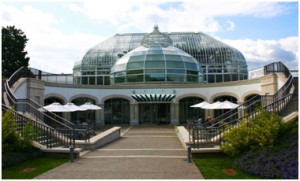 The Phipps conservatory is an Oakland landmark well-known nationally for its collection of exotic tropical plants in an aesthetically laid out greenhouse. No wonder it is a popular spot for weddings.
The Phipps conservatory is an Oakland landmark well-known nationally for its collection of exotic tropical plants in an aesthetically laid out greenhouse. No wonder it is a popular spot for weddings.
A team of Phipps’ staff and volunteers led by its Tropical Forest Curator Ben Dunigan and Horticulturist Jordyn Melino is gearing up for Tropical Forest India, a 3-year long — February 2012 to February 2015 — exhibition of live species from India’s diverse tropical forest along the Western Ghats stretching from Gujarat all the way to the southern tip of Kanyakumari along the Arabian sea coast.
Nearly 800,000 visitors are expected to come to the exhibition. In addition to live exhibits including medicinal plants, we are also likely to have multimedia presentations on the area’s flora, fauna, temples, and peoples. More details will be forthcoming in coming months. Visit www.phipps.conservatory.org for additional details.
     — Kollengode S. Venkataraman
Raja Wins in the Republican Primary
Uphill contest in November against Rich Fitzgerald (D)
By Kollengode S. Venkataraman
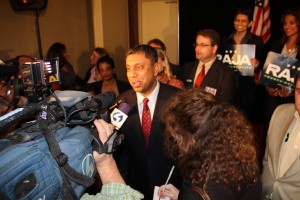 D. Raja, the president of Mount Lebanon city council and known to many readers, won the Republican nomination for the office of Allegheny County’s chief executive in the May 16 primary election. He easily defeated the old-time Republican pol Chuck McCullough.Â
D. Raja, the president of Mount Lebanon city council and known to many readers, won the Republican nomination for the office of Allegheny County’s chief executive in the May 16 primary election. He easily defeated the old-time Republican pol Chuck McCullough.Â
Raja, a relatively unknown figure in the county’s electoral politics, will face his Democratic opponent Rich Fitzgerald, another entrepreneur, a very native son of the county. Fitzgerald is also a 11-year veteran in the Allegheny County Council, with seven years as the council president.
Raja, born in Bangalore and raised in Bangalore and Chennai, came to the University of Pittsburgh in 1986 with his bachelor’s degree in electrical engineering to earn his MS in computer science. He started his own IT consulting company, now known as CEI America founded in 1992 that employs around 300 in the US and another 100 in India. CEI now has many Fortune-500 companies as clients. Along the way, he also earned an MBA from CMU. In 2007, Raja was elected the commissioner from Ward 1 in Mt. Lebanon. He became the president of the council in 2010, which he resigned to contest the fall election. Â
For the successful and first Indian-American entrepreneur with ambition to become Allegheny County’s chief executive, getting the Republican nomination was the easy part. After all, Raja had the endorsement of the party’s heavyweights here — Governor Tom Corbett; US Senator Pat Toomey; Congressmen Tim Murphy and Mike Doyle; state house majority leader Mike Turzai; and Jim Roddey, the first chief executive of Allegheny County; among others.Â
Chuck McCullough’s legal problems and that McCullough’s previous boss Jim Roddey himself endorsed Raja only made it easy for Raja in the primary. McCullough, a known figure in county electoral politics, is facing criminal charges of taking money from his elderly woman client and donating the moolah without her approval. His cash-strapped campaign and rains on the election day pretty much sealed McCullough’s defeat.
The job is cut out for Raja between now and November when he faces Rich Fitzgerald, his Democratic opponent. Governor Corbett’s endorsement, which helped Raja win the Republican primary, could become the liability in November, given the unpopularity of the Governor just months after taking office. Pennsylvania’s ultraconservative US Sen. Pat Toomey’s endorsement too is a problem for Raja among the middle-of-the-road voters, not to speak of liberals. Besides, in Allegheny County, among registered voters, for every two registered Republicans, we have five registered Democrats. That is perhaps why no credible “mainstreamâ€Â Republican even sought the nomination.Â
After the primary elections, Marty Griffin, the host of the morning talk show on KDKA Radio, interviewed Raja giving him opportunities to introduce himself to his listeners. Griffin was candid: Running an IT business as its Founding CEO is one thing, he said, where you are free to make all the decisions and even change the decisions. But in municipal government there are many deeply entrenched competing interests. And the Chief Executive’s writ will not go far if he cannot carry with him the majority of the county’s cantankerous council members.
Besides, running a financially strapped county that encompasses over 120 municipalities including the “Most Livable†City of Pittsburgh, many of them in deep financial hole, offers a list of challenges. After all, these municipalities fight among themselves like the petty City States in ancient Greece.
Raja (as of June 15, 2010) was yet to come with the specifics on what he sees as the challenges, and how he is going to address them.
Listening to Griffin’s talk show was “educational.†His “birther†listeners were wondering if Raja was born in the US to be eligible to contest the election. So, Raja will have to start at the very beginning in educating voters without appearing preachy that one does not have to be a natural citizen to contest the election even for the US Senate. Given that our region is very parochial — this is Post-Gazette’s veteran columnist Reg Henry’s assessment*, not mine — it was not surprising.
Griffin’s listeners were also uncomfortable with Raja’s simple two-consonant two-syllable name containing only one vowel. And his accent. And his faith as well, even before they even cared to know what his faith was.
 This is nothing new in the US. Ask President Obama. Or ask Republican Mitt Romney. Many Republicans are uncomfortable with Mitt Romney’s Mormon faith.
Obviously, our voters have lot of room to grow. And as Indian-Americans, we too need to come out of our suburban enclaves, and niches in universities, hospitals, corporate world, and other organizations and make average voters accept us as one of them.Â
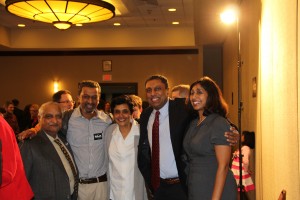 For winning, Raja has to succeed in persuading a large number of liberal Democrats to defect and social conservatives among voters to vote for him. One wonders which is more difficult. He has a steep hill to climb between now and November. Mercifully, he will be unencumbered with the biennial Congressional elections and the quadrennial presidential elections. In this election, he is flying solo with no Republican coattail effect. Nor will he have a strong Democratic headwind. But the 5-to-2 margin of registered Democrats over GOP in the county, and Fitzgerald’s home-grown background are formidable enough.
For winning, Raja has to succeed in persuading a large number of liberal Democrats to defect and social conservatives among voters to vote for him. One wonders which is more difficult. He has a steep hill to climb between now and November. Mercifully, he will be unencumbered with the biennial Congressional elections and the quadrennial presidential elections. In this election, he is flying solo with no Republican coattail effect. Nor will he have a strong Democratic headwind. But the 5-to-2 margin of registered Democrats over GOP in the county, and Fitzgerald’s home-grown background are formidable enough.
The contest will be between the Republican Raja and his Democratic opponent Rich Fitzgerald on their own individual strengths and weaknesses. We wish Raja all the best in the fall election and even beyond.
 * This is how Reg Henry, a 30-year veteran columnist in the Post Gazette characterizes our citizens’ parochialism: “This is one of the most parochial towns I have ever lived in… … We encountered several candidates who did not just live in the same neighborhood they grew up in, they lived in the same house.â€
Jack Kevorkian: Trailblazer on End-of-Life Issues
 Dr. Jack Kevorkian, who, by his in-your-face approach brought to the forefront the plight of terminally ill patients’ right to die in dignity when they have no options to live with dignity and autonomy, died in May. He was 83. In the 1990s he brought to the fore the inability (or is it unwillingness?) of our society at large — the medical establishment, the legislature, the clergy, law enforcement authorities, and the judiciary — to come to grips with the agony of not only the terminally ill people, but also their care-givers.
Given our compartmentalized lifestyle, people cannot comprehend the sense of deprivation and the deeply personal pain the terminally ill suffer; and the agony of those closely living with the terminally ill taking care of them 24/7.
We admire modern medicine for coming up with new procedures, medicines, and gadgets for finding cures for scores of illnesses and extending our productive lives; but in the end, these marvels also simply prolong life without addressing the issues on the basic human dignity and autonomy of patients, and the associated cost. So, it was necessary that Kevorkian used unorthodox approaches to bring the central issues of the terminally ill in public discourse. Indeed, his approach was very effective.Â
As the New York Times said in its obituary to Kevorkian, “In arguing for the right of the terminally ill to choose how they die, Dr. Kevorkian challenged social taboos about disease and dying while defying prosecutors and the courts.â€Â He helped 130 terminally ill people to end their lives. His critics called him Dr. Death. He was convicted of second degree murder in the death of his last patient. Sentenced to 10 to 25 years in a maximum security prison, Kevorkian was released after spending eight years in prison after agreeing not to help others to end their lives.
Jack Lessenberry, the Michigan journalist who covered Dr. Kevorkian, wrote in The Detroit Metro Times: “Jack Kevorkian, faults and all, was a major force for good in this society. He forced us to pay attention to one of the biggest elephants in society’s living room: the fact that today vast numbers of people are alive who would rather be dead, who have lives not worth living.â€
Kevorkian’s crusade on behalf of the terminally ill led to the growth of the hospice care industry with improvements in the quality of care. The medical establishment itself changed its approach to pain management. And Oregon even legalized medical ending the life for the terminally ill, and removed the criminality and social stigma for their decision.
The central issue for which Kevorkian fought is only going to become acute in the years ahead, with an even more aging population, and reduced government resources available for Medicare for the elderly and Medicaid for the poor. One day, society will even thank Kevorkian for bringing to the forefront the dilemmas and challenges faced by the terminally ill.
We are honored to do it today itself. Thank you, Dr. Kevorkian.
 — K S Venkataraman
India’s US Ambassador Meera Shankar Sees Further Strengthening Indo-US Ties
By Kollengode S Venkataraman
India’s ambassador to the US, Ms. Meera Shankar, in her address to a gathering organized by the World Affairs Council of Pittsburgh covered many topics her diverse audience of US business executives, Indian entrepreneurs, academics, and Indian-Americans wanted to hear.
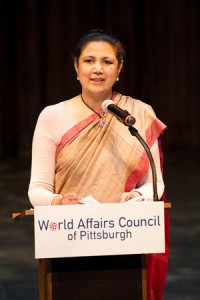 Addressing nearly 150 people on Thursday, April 28 at the New Hazlett theater in North Side, Shankar said, after the improved Indo-US relationships during the past several administrations in US and India, President Obama’s and Prime Minister Manmohan Singh’s state visits are new milestones.
Addressing nearly 150 people on Thursday, April 28 at the New Hazlett theater in North Side, Shankar said, after the improved Indo-US relationships during the past several administrations in US and India, President Obama’s and Prime Minister Manmohan Singh’s state visits are new milestones.
On terrorism, Shankar said India and US, both constitutional pluralistic democracies, are vulnerable — Indian more so than the US given the history of the subcontinent. Naturally, both US and India, she said, are committed to counter terrorism in Pakistan and Afghanistan. India wants a stable and prosperous Afghanistan, she said, simply because an unstable Afghanistan, the corridor between the oil and gas rich Central Asia and the energy hungry India, brings problems for the whole region. Another factor is Afghanistan’s untapped mineral wealth. For the same reason, Pakistan also wants control the region. India is working with Afghanistan on farming, women’s empowerment, and education an other areas.
On India’s economy, she said, India’s growth rate even during the recent recession was a respectable 6%, which has bounced back to over 8% now. It is one of the high growth rates among nations. India’s growth, driven as much by internal demands, smoothens the impact of the wide swings in global economy on India. So, she sees opportunities for cooperation in areas of mutual interest in trade and technologies in pharmaceuticals, steel, and IT, defense- and security-related areas.
Even though in terms of absolute numbers trade with India does not rank high in the US foreign trade, there are great opportunities for growth. US exports to India rose by nearly 300% over the last decade. (Note: For 2010, US exports to India is $19 billion, imports from India is $29 billion. US export to China is in a very different orbit: Export to China $90 billion, import from China is $360 billion).
While US is now the source for the largest overseas direct investments in India, Indian businesses, too, have started investing in US in energy and other sectors. In spite of the spectacular growth stats, Shankar candidly acknowledged the widespread poverty in India, and the benefits of growth not percolating to poor people, which, we should say, has the potential for triggering social unrest.Â
While 60% of India’s population depends on farming, farming accounts for only 20% of India’s GDP. India, she said, still remembers the acute food shortage of the 1960s, which lead to the first Green Revolution with help from American agronomists. Given the history of famine in the Indian subcontinent and the severe malnutrition among children from low-income and poor families even today, it was not surprising that Shankar said, “Food security is important to India’s national security, and this reflects in Indo-US relationships.â€Â
On India’s energy needs, while conceding the impact of fossil fuel on climate change, she said both India and the US depend on fossil fuel to a great extent. She said India is committed to clean and renewable technology for meeting India’s energy needs. While citing the example of two nuclear power plants to be built in India with US technology, Shankar said, rather incredulously, that nuclear energy is environmentally friendly.
While Indo-US defense cooperation is strong as seen by the increasing defense purchases from the US, Shankar said, India wants to diversify its defense procurements.
After the formal address, Shankar fielded several questions from the audience covering a whole range of issues.
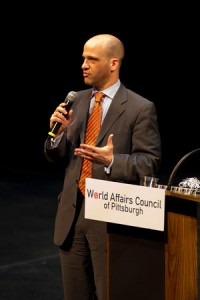 David Murdoch, Managing Director, and Stevel Sokol, President of WAC of Pittsburgh (shown in the adjacent picture intoducing Ambassador Shankar)Â also addressed the gathering. Sunil Wadhwani introduced the ambassador to the audience. Dennis Lobonski of Allegheny conference on Community Development also briefly talked about foreign direct investment opportunities in Pittsburgh.
David Murdoch, Managing Director, and Stevel Sokol, President of WAC of Pittsburgh (shown in the adjacent picture intoducing Ambassador Shankar)Â also addressed the gathering. Sunil Wadhwani introduced the ambassador to the audience. Dennis Lobonski of Allegheny conference on Community Development also briefly talked about foreign direct investment opportunities in Pittsburgh.
During her visit Ambassador Shankar also met with Governor Tom Corbett and County Executive Dan Onorato. She visited Carnegie Mellon University and the University of Pittsburgh and met with their officials.
World Affairs Council of Pittsburgh with support from the Allegheny Conference on Community Development and Pittsburgh Regional Alliance organized the event. Aquatech, BNY Mellon, Bombardier, PNC Hawthorn, Koppers, Heinz, Westinghouse, and UPMC sponsored the event, among other companies having business interest in India.
Next day Lalit Chordia of Thar Technologies hosted a private reception to the ambassador at Phipps Conservatory, where its Assistant Curator Ben Dunigan told the ambassador and the invited guests that they are working on an ambitious project titled Tropical Forest India. This will feature live exhibition on India’s (and Asia’s) centuries old technique of cultivating several commercial crops in the same physical space, which modern agronomy calls “intercropping.†See details on page 21.  n
Silk Screen Gala-6 Scintillates Again
by Sandhya Krishnan       e-mail:  sandhyakrishnan@gmail.com.
Sandhya Krishnan works at the corporate office of the famous local grocery chain, often moonlighting as the founder-director of Blue Mango – a multi-ethnic theatre group based in Pittsburgh. Having done two plays in the last two years, she is currently working on the third. Sandhya is an alumnus of BITS Pilani and XLRI Jamshedpur and lives with her husband in the beautiful Squirrel Hill neighborhood. Â
 Getting a diverse, colorful and well-connected crowd together is no easy feat and Executive Director Harish Saluja seems to pull it off effortlessly every single time. On May 6 2011, The Silk Screen Festival team hosted their Annual gala at the Omni William Penn hotel and an estimated 300 patrons showed up in their ethnic best.
Getting a diverse, colorful and well-connected crowd together is no easy feat and Executive Director Harish Saluja seems to pull it off effortlessly every single time. On May 6 2011, The Silk Screen Festival team hosted their Annual gala at the Omni William Penn hotel and an estimated 300 patrons showed up in their ethnic best.
Drawing attention were Kathy and Sean Engel, attired in Indian traditional wear. Sean was seen sporting a bridegroom look from Udaipur, complete with a glittering turban, while Kathy paired her turquoise Jaipur saree with jewelry from Delhi. “We love Asian culture†said Kathy, adding that they plan to celebrate their anniversary by catching some of the movies at the festival.
The selection of food was diverse too, from Indian fare from Taj Mahal and Mediterranean from Alladin’s to Thai from my favorite place, Thai Cuisine. Several lovely pieces of origami made up the décor while a length of the room was lined with auction items. Inspired, I followed the kimono route to meet Kumiko Lancet and her team. Every year they are a part of the festival and this time they were the prelude to the main event. Their band of singers and musicians entertained the crowd with traditional Japanese songs from 7.30-8.00 pm.
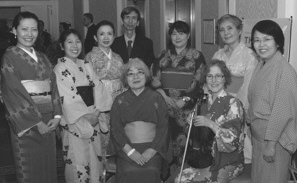 The entertainment was interesting and new, though from what I heard some pieces made a repeat appearance. As excited I was to see the myriad performances, I thought the artistes deserved more attention, either by the layout of the room or by having the audience seated.
The entertainment was interesting and new, though from what I heard some pieces made a repeat appearance. As excited I was to see the myriad performances, I thought the artistes deserved more attention, either by the layout of the room or by having the audience seated.
I love that Silk Screen is a part of our art scenario in Pittsburgh. The movies are always exciting, the marketing is great and the festival is one the city looks forward to every spring. And the gala, besides being a well-attended gorgeous evening, stood testimony to the fact that success comes in all colors!
Editor’s note: Nominated by Katie Jones of Silk Screen, Harish Saluja was chosen by UPMC Center for Inclusion as the Dignity and Respect Champion for May 2011 for fostering understanding across lines of race, ethnicity, religion, age, and region through Silk Screen. n
When the Quake Hit Japan: A Nuclear Engineer’s First-Person Observations
By Urmimala Shome   e-mail: sango83@gmail.com
 Editor’s Note: Born in Kolkata, India, Urmimala Shome came to Pittsburgh, PA, when her parents moved to Pittsburgh, over 25 years ago. She was five years old. She grew up in Pittsburgh earned her mechanical engineering degree from Carnegie Mellon, and is working in the commercial nuclear power industry since June 2005. After working as an Accident Analyst at Westinghouse Electric for five years she moved to Mitsubishi Heavy Industries (MHI) last year as a Severe Accident Analyst. She was in Japan on work when the quake hit. She lives in Arlington, VA.
Editor’s Note: Born in Kolkata, India, Urmimala Shome came to Pittsburgh, PA, when her parents moved to Pittsburgh, over 25 years ago. She was five years old. She grew up in Pittsburgh earned her mechanical engineering degree from Carnegie Mellon, and is working in the commercial nuclear power industry since June 2005. After working as an Accident Analyst at Westinghouse Electric for five years she moved to Mitsubishi Heavy Industries (MHI) last year as a Severe Accident Analyst. She was in Japan on work when the quake hit. She lives in Arlington, VA.
I was at work when the quake hit. I was jotting down some mundane project schedule reminder when, all of a sudden I started to feel dizzy and nauseous. Then I noticed the window blinds swaying back and forth like a pendulum. “Ah, my first Japan earthquake,†I thought. My first international quake really, as I had lived through several smaller ones during my short stay in California. Several minutes passed. I began to realize that the rocking motion (like ones on a boat in choppy weather) had not subsided or reduced in intensity. Most of my Japanese teammates were congregating at the windows and peering out at the ocean. At the time of the quake, I was working out of Kobe, a port city on the Pacific Coast, located in southwestern Japan. Mitsubishi’s Energy & Transportation Division is located at the MHI Shipping yard, right next to the ocean.
 About five whole minutes passed since I first noticed the first sign of a quake. During those minutes, I had been giving a play-by-play of the situation to friends back in California via g-chat. I immediately went on the USGS.org site, reading about the time, location, and magnitude of the quake. Preliminary readings put it at 7.9 on the U.S. Richter scale, the epicenter approximately 900 km (~560 miles) northeast of Kobe. The final reading placed it at a 9.0.
About five whole minutes passed since I first noticed the first sign of a quake. During those minutes, I had been giving a play-by-play of the situation to friends back in California via g-chat. I immediately went on the USGS.org site, reading about the time, location, and magnitude of the quake. Preliminary readings put it at 7.9 on the U.S. Richter scale, the epicenter approximately 900 km (~560 miles) northeast of Kobe. The final reading placed it at a 9.0.
Japanese zoning and construction laws are strict about building on earthquake-prone  sites. Modern buildings are designed to sway during a quake, and absorb the kinetic energy of the moving ground. Your sways and the displacements you experience depends on how far you are above the ground, on what floor you are on – the higher you are, the more sway you will feel. My group is located on the eighth floor of a 12-story building, so we definitely felt our building rock back and forth.
sites. Modern buildings are designed to sway during a quake, and absorb the kinetic energy of the moving ground. Your sways and the displacements you experience depends on how far you are above the ground, on what floor you are on – the higher you are, the more sway you will feel. My group is located on the eighth floor of a 12-story building, so we definitely felt our building rock back and forth.
 Soon after the initial quake stopped, the aftershocks started; two were almost as severe lasting almost as long as the initial tremor. Since the epicenter was out in the sea, Kobe was at risk of being hit by a tsunami. About ten minutes after the end of the second aftershock, we were told to evacuate in response to a tsunami warning. But Kobe was spared  any tsunami effects.
Soon after the initial quake stopped, the aftershocks started; two were almost as severe lasting almost as long as the initial tremor. Since the epicenter was out in the sea, Kobe was at risk of being hit by a tsunami. About ten minutes after the end of the second aftershock, we were told to evacuate in response to a tsunami warning. But Kobe was spared  any tsunami effects.
For a entire week after March 11th, I was on the phone, e-mailing, and Skyping with family and friends trying to reassure them of my safety. I initially did not plan to return to the U.S., but decided to do visit my family who were understandably worried sick.Â
Throughout this week, news coverage of the Fukushima Daiichi nuclear plant situation was in full swing. Working in the commercial nuclear power industry for the past six years, of course, gave me better understanding into the technical aspects of the accident in the four reactors. It was interesting for me to see how the situation was explained to the public.
There was a definite contrast between Japanese and American reporting. Watching CNN that first night, I was rather disappointed with the lack of accurate reporting in the U.S. I soon turned CNN off and started reading Al Jazeera, BBC, World Nuclear News, and the NRC sites online. I soon instructed my family and friends to follow suit.Â
American news programs sensationalized about 90% of their coverage of Fukushima. Instead of trying to explain basic principles of how nuclear energy is generated or even the layout of the inside of these types of reactors, reporters felt the need to politicize the future of nuclear power in general by comparing the accident to Chernobyl and Three Mile Island. They were falsely claiming that Fukushima was “another Chernobyl,†which is not only inaccurate, but also unethical because that comparison propagated rampant misinformation. Instead of calm, collected, and objective journalism, the American public was misinformed with anti-nuclear energy rhetoric and propaganda. The Japanese reporting was more objective. Specifically, the NHK news anchors kept table-top models of the inside of the Fukushima reactor to help explain the phenomenon inside the plant. They interviewed the electric utility company officials who owned the reactor as well as the civilians impacted by the evacuation. In the first weeks after the quake, NHK reporters focused on trying to be as informative as possible, without commenting on the politics of Japan’s nuclear power.Â
Outside of the news coverage, I was rather impressed by the level of calm and preparedness shown by the Japanese people. Their response was one of seasoned veterans facing yet another natural disaster. Of course, this quake was singularly worse because the huge quake was coupled with tsunami, which destroyed a nuclear plant, leading to radiation exposure.Â
Had something of this magnitude happened anywhere else in the world, especially in the U.S., it is entirely possible that we would have had much more mass panic and disorder. The aftermath of Hurricane Katrina provides a good example. The widespread looting during Katrina was starkly different from the dignified and respectful way that the Japanese people treated one another. There seemed to be a real sense of community and camaraderie from the very start in the wake of the great calamity.
As a result of this level of cooperation, the impacted region of Japan is now steadily recovering. However, the question remains, what is the fate of nuclear power in Japan and rest of the world? There are many lessons to be learned from Fukushima. The worldwide nuclear community must be given the opportunity to apply those lessons learned to new plan construction.
It is clear that the much-lauded “nuclear renaissance†can no longer go full-steam ahead. Already, all of the world’s nuclear reactors are being inspected again, and have been either modified or shut down as a result.
There is no doubt that the accidents at Fukushima have shaken people’s confidence in nuclear power. Going forward, it is the responsibility of the nuclear industry to convince the public that nuclear power is safe, and still has a future in our world. So we are taking it one day at a time. n
Obituary: James White – May 1941 to April 2011
Curator of Botanical Library at CMU and an Avid Lover of Indian Music and Visual Arts
 James White, the very soft-spoken curator of Botanical Documentation at Carnegie Mellon University’s Hunt Library, and a great lover of Indian performing and visual arts, died on April 12, 2011 in the wake of an accelerating degenerative neurological disease. He was 69.
James White, the very soft-spoken curator of Botanical Documentation at Carnegie Mellon University’s Hunt Library, and a great lover of Indian performing and visual arts, died on April 12, 2011 in the wake of an accelerating degenerative neurological disease. He was 69.
White, born and raised in Johnson City, Tennessee, earned his bachelor’s degree from East Tennessee State University. Later he went to Washington, D.C., where he took botany classes at George Washington University and art classes at the Corcoran Museum of Art. Then he joined the Smithsonian Institution in their botanical section.
In 1978 he moved to Hunt Institute’s botanical collections as the curator. In 1996 on a Fulbright fellowship, he went to India to catalog the colonial era botanical art. He returned to India two more times, and developed contacts with Indian painters working on India’s flora and fauna. As a person keenly interested in visual arts, India, warts and all, fascinated him. He became an Indophile. After reading the Sikh history, he became a practicing Sikh. He had a personal collection of arts and artifacts from many places, including several exquisite bronzes from India. His friend helped in auctioning them off to pay for his nursing home care.
He brought several Indian artists — Mahaveer Swamy from Rajasthan in 1994; Arundhati Vartak from Maharashtra in 2000; and Damodarlal Gurjar in 2001 — giving first exposure to their works in the US. As a testimony to his judgment to bring them here, most of their works were sold out.
Many readers would remember seeing White sitting very quietly in Indian music concerts in Oakland and in the S.V.Temple auditorium. He also helped in establishing the Pittsburgh branch of SPIC-MACAY (Society for the Promotion of Classical Music and Culture Amongst Youth).
 On more than one occasion White shared with friends his frustrations in dealing with museum administrators in India. In a Bangalore museum he saw a large collection of paintings in rolls in a musty basement. When he broached organizing an exhibition of the paintings (paying from his resources for insurance, shipping, framing them for display), the museum director asked him for a business class ticket for him and his wife.
On more than one occasion White shared with friends his frustrations in dealing with museum administrators in India. In a Bangalore museum he saw a large collection of paintings in rolls in a musty basement. When he broached organizing an exhibition of the paintings (paying from his resources for insurance, shipping, framing them for display), the museum director asked him for a business class ticket for him and his wife.
The Hunt Library organized a memorial service to James White on May 20 at CMU. In White’s death, the Indian Diaspora in Pittsburgh lost a good friend.                                    —Â
Photo by Deepak Kotwal : The 48″ high Saraswati in Chola- style bronze from the private collection of Mr. Jim White, an Indophile. White passed away in April.
By Premlata Venkataraman.
Sri Sathya Sai Baba: Godman with difference.
 Sri Sathya Sai Baba was a unique spiritual figure of our times, whose teachings transcended linguistic, social, national, and even religious barriers. His message was simple and universal: “Love all, serve all.† He said,†I have not come on behalf of any exclusive religion. I have not come seeking publicity for a sect, creed, or cause; nor have I come to collect followers for a doctrine. I have come to establish Sanathana Dharma (the Eternal Order).†Â
Sri Sathya Sai Baba was a unique spiritual figure of our times, whose teachings transcended linguistic, social, national, and even religious barriers. His message was simple and universal: “Love all, serve all.† He said,†I have not come on behalf of any exclusive religion. I have not come seeking publicity for a sect, creed, or cause; nor have I come to collect followers for a doctrine. I have come to establish Sanathana Dharma (the Eternal Order).†Â
 People of all faith came to him. One did not have to abandon his or her religion to be his follower. He said, “Let the different faiths exist, let them flourish, and let the glory of God be sung in all the languages and in a variety of tunes.† One did not even have to be believer to acknowledge the phenomenon he has been.
What attracted me personally most was his legacy of service. Miracles were second nature to him. His mission was to serve the “poorest of the poor†all across the globe, from the tiny hamlet of Puttaparthi to the remote corners of the world. He established state-of-the-art super specialty hospitals, general hospitals, clinics — even mobile hospitals for those who could not come to the hospitals.
The hospitals provide basic and advance healthcare free of charge to all. Patients received both “Dava and Duaâ€as Prime Minister Vajpayee, his devotee, said inaugurating his Banglore Hospital.
He always said, â€Serving hands are holier than praying lips.â€Â Such was the quality of in his mission hospitals that they model many governments and NGOs wonder how he makes it work. Even WHO sent a special team to study the workings of his hospitals and model the team was pleasantly surprised on how effectively managed they were.
Sai Baba also started an education system “EHV†Education in Human Values, which include Sathya, Dharma, Shanti, Prema and Amhinsa, (or Truth, Fairness, Peace, Compassion, and Nonviolence) which was readily adopted in many school curricula including in schools in Muslims countries like UAE.
One of his famous sayings was: “If there is righteousness in the heart, there will be beauty in the character. If there is a beauty in the character, there will be harmony in home. When there is a harmony in home, there will be order in the nation. When there is an order in the nation, there will be peace in the world.†When India’s ex-President Abdul Kalaam, another devout follower, quoted this passage while addressing the European Parliament, there was an unprecedented thundering ovation after this quote.
No amount of words or space can describe his true glory. Of course, detractors are always there against any divine being in any age. Some even question his timing of leaving his body. Actually, he left his body at the precise age of 96 according to Vedic Lunar calendar not Gregorian calendar.
That he was the source of inspiration to the building of so many hospitals and educational institutions, and making them accessible to the really poor was perhaps the most tangible of all the miracles.
 I believe he is what he said he was — a divine being in human form.




